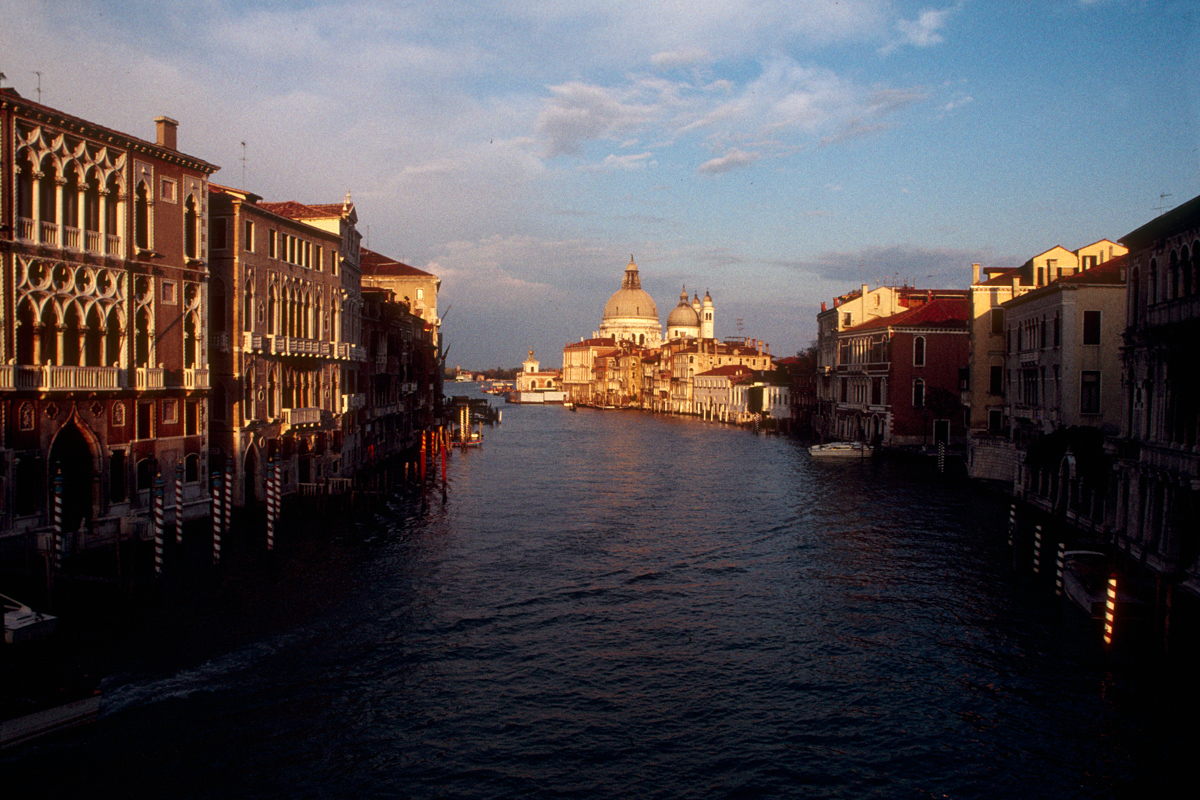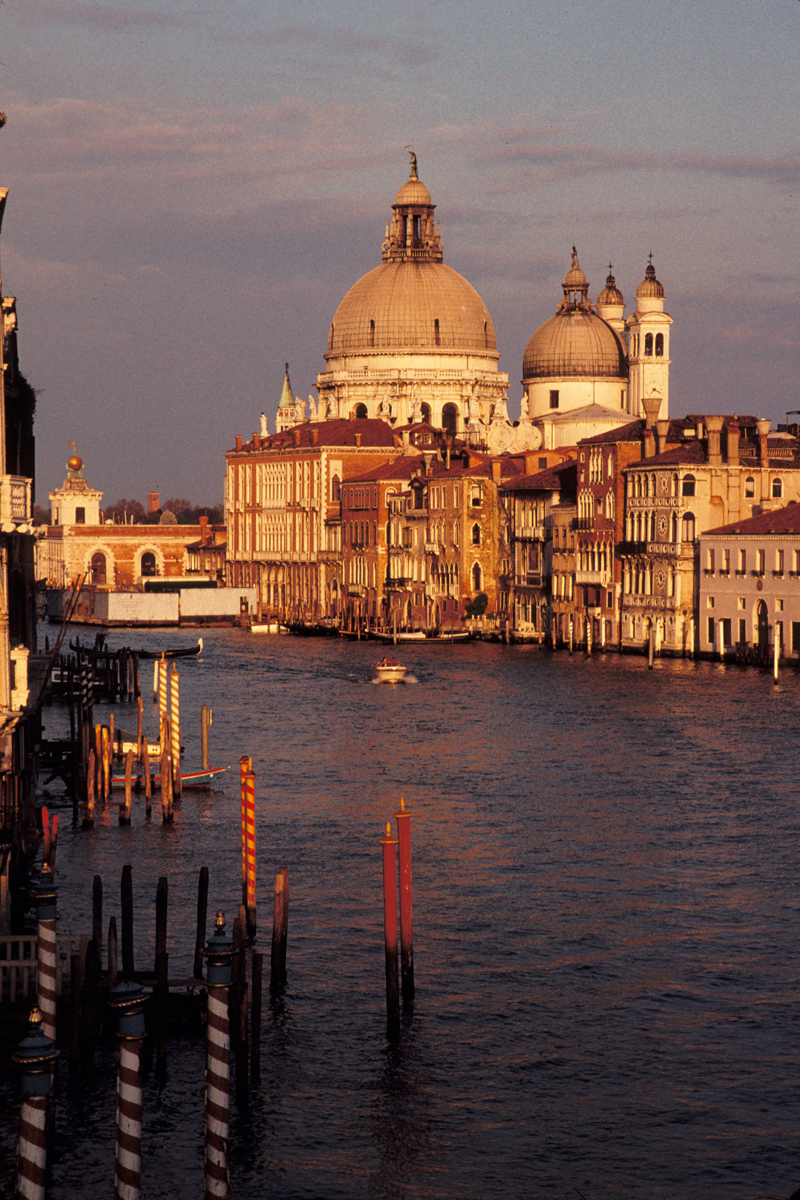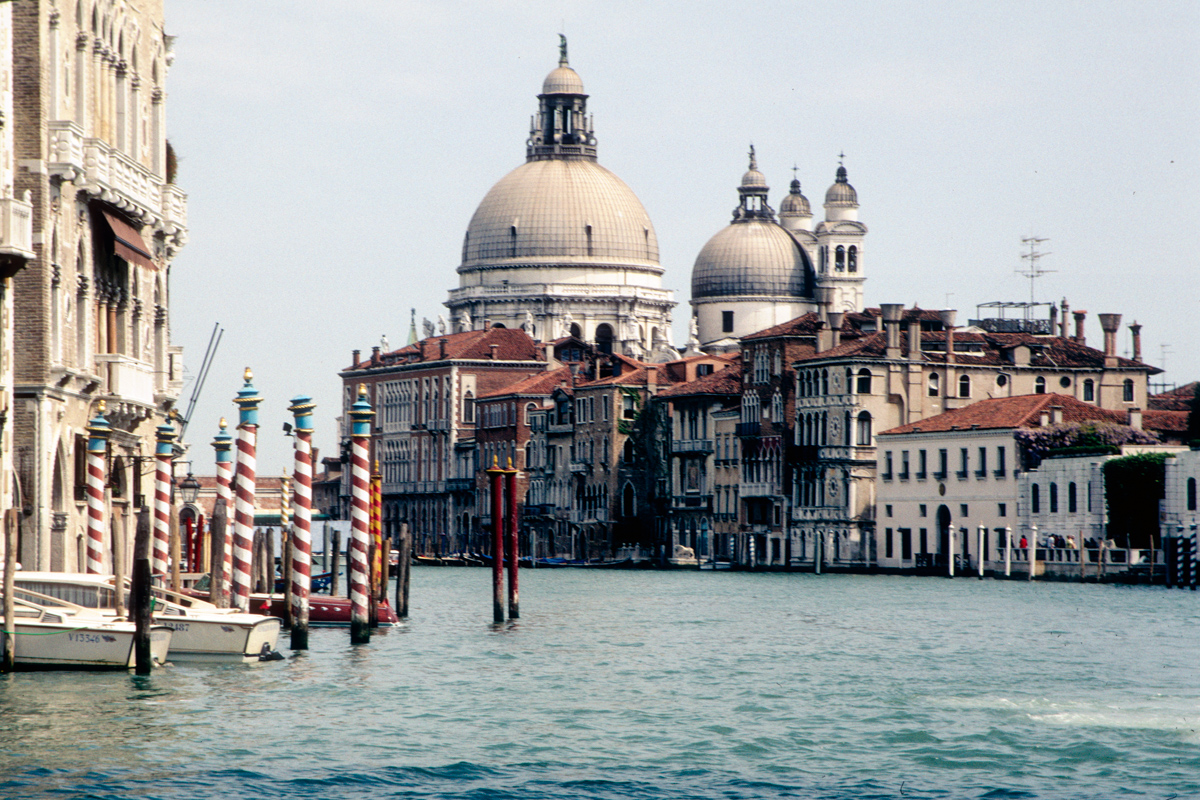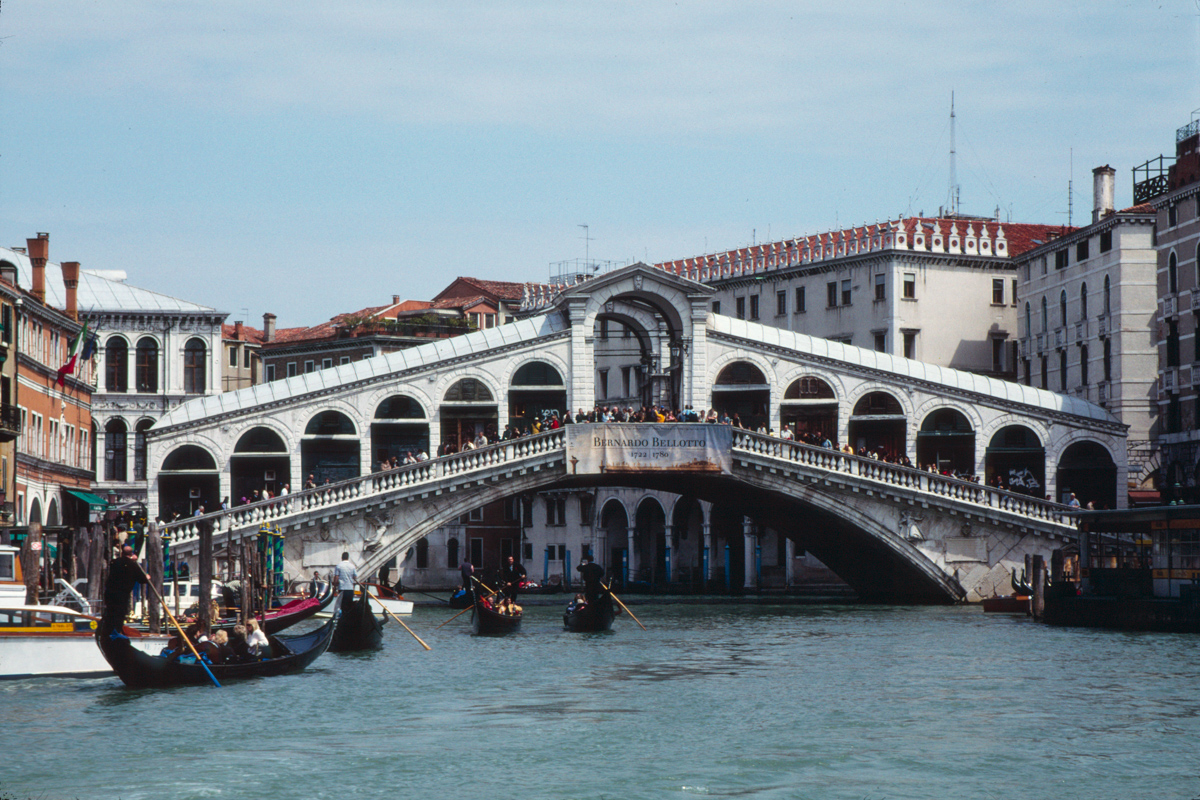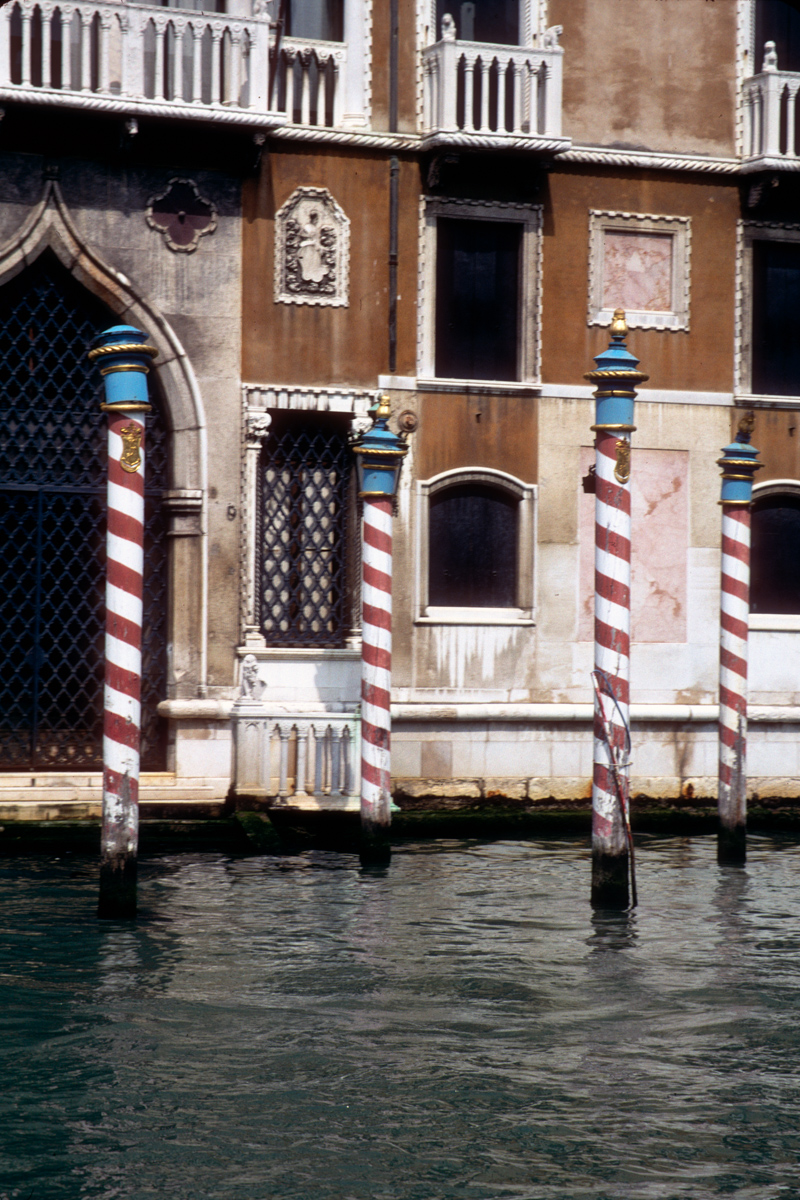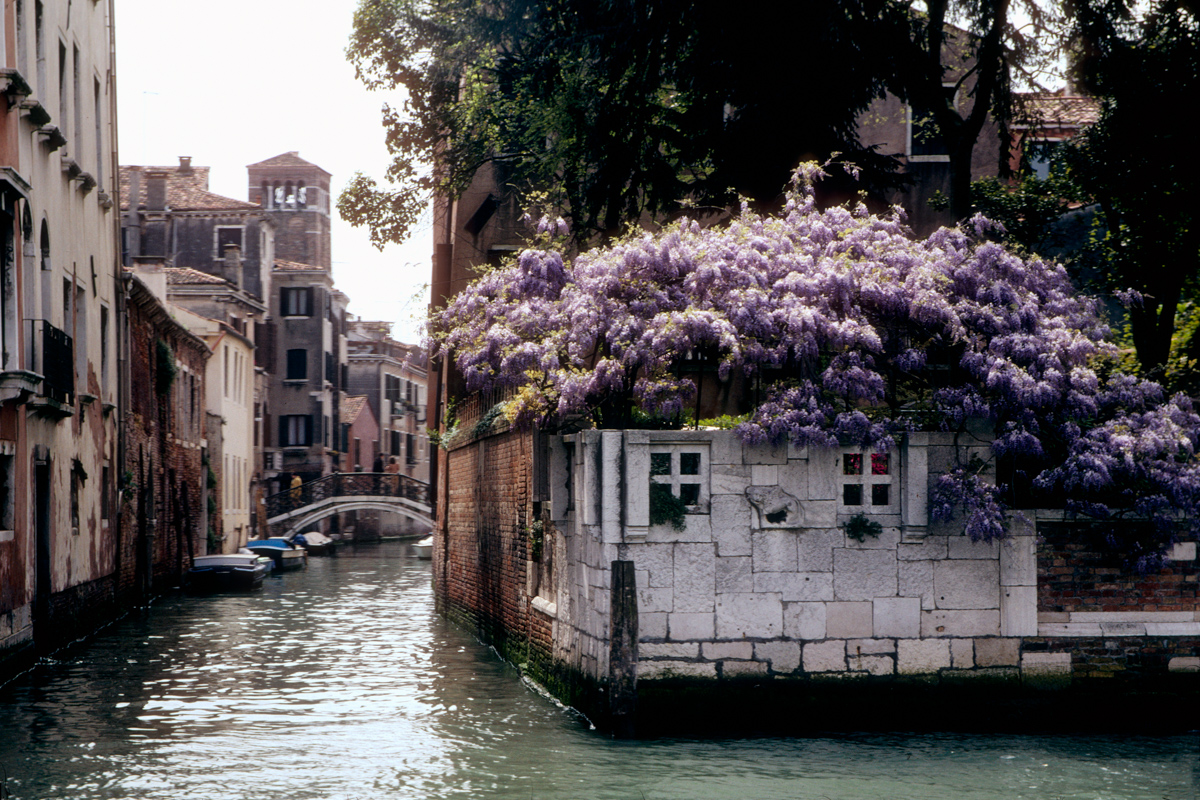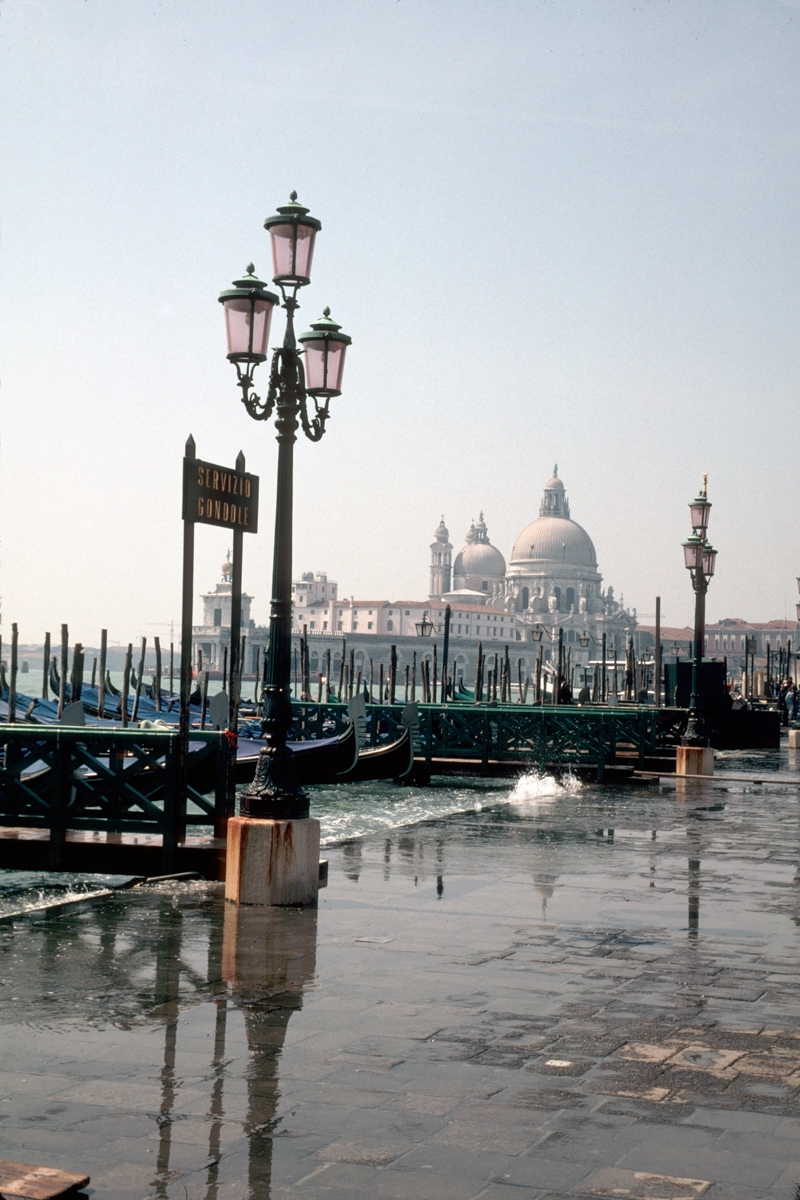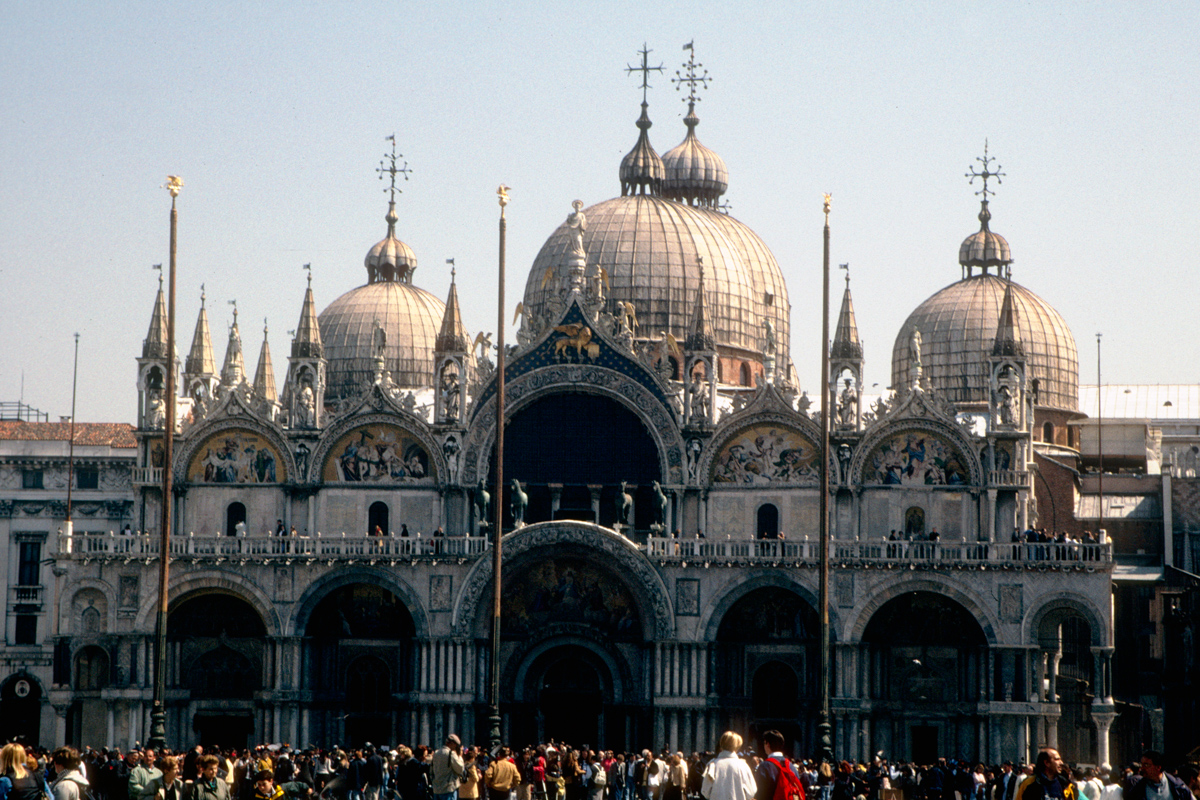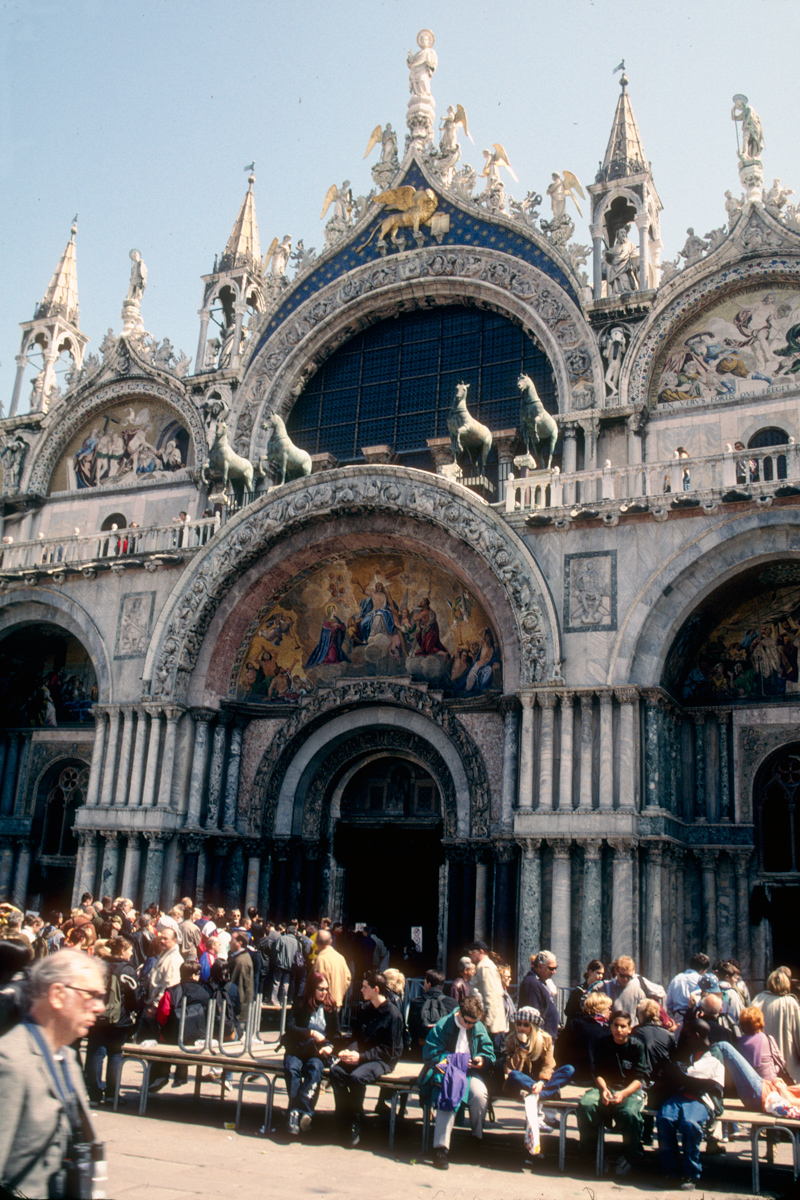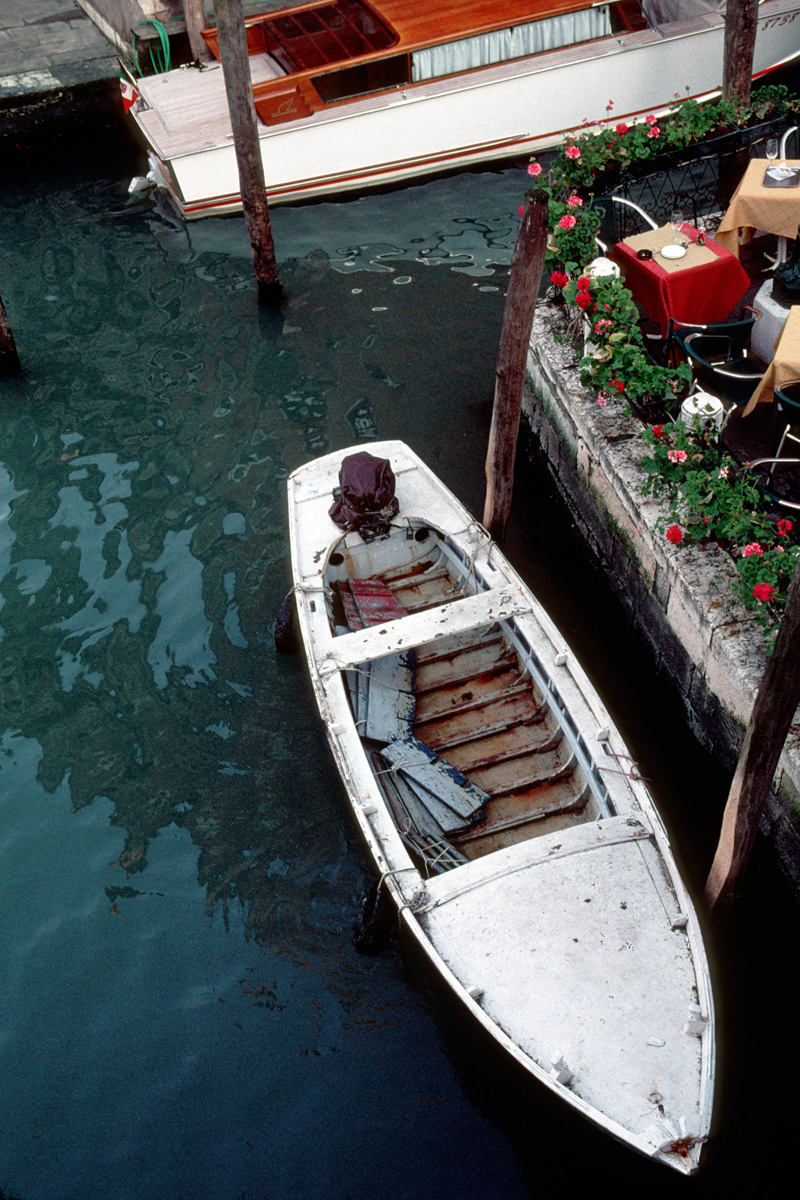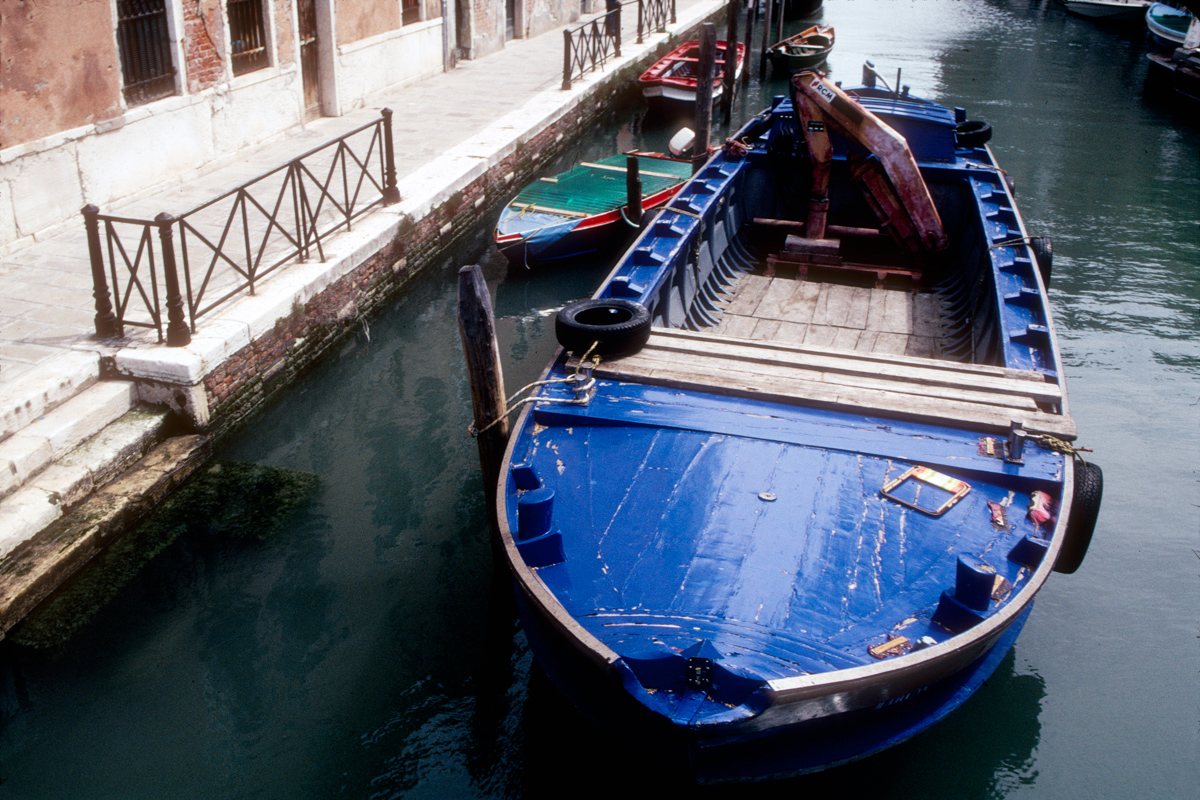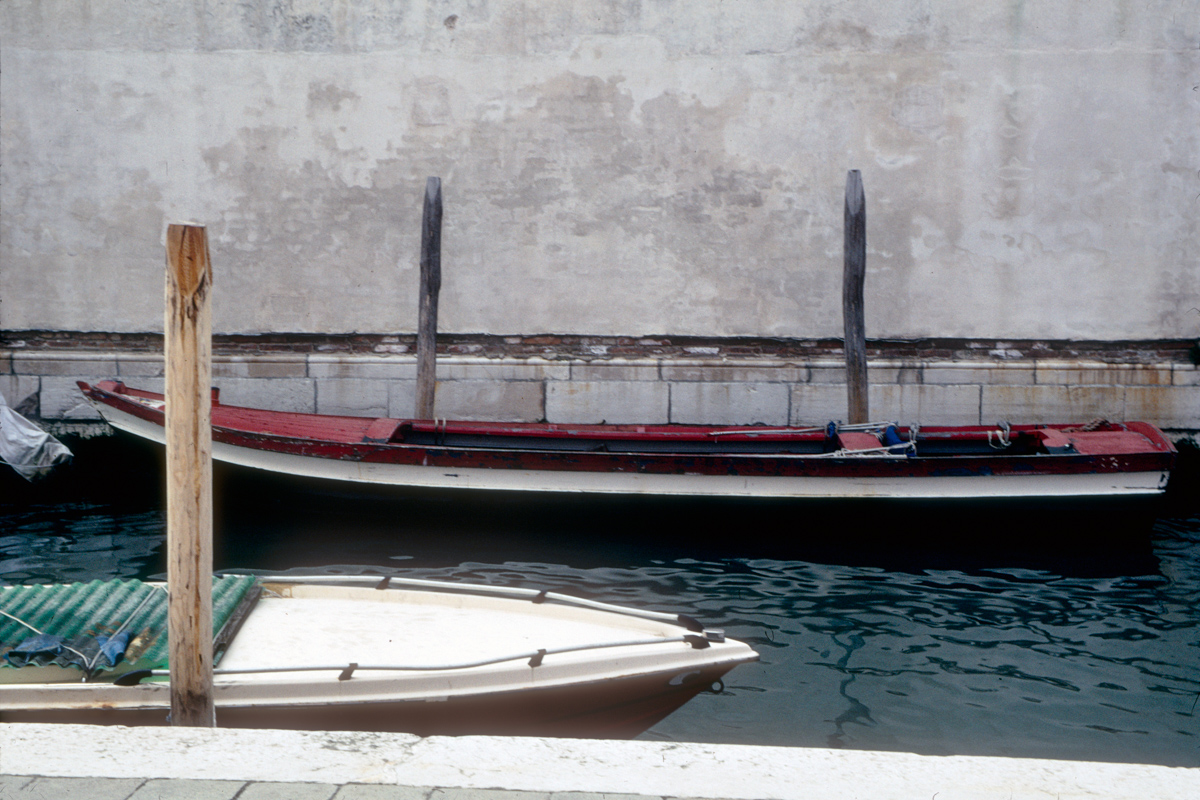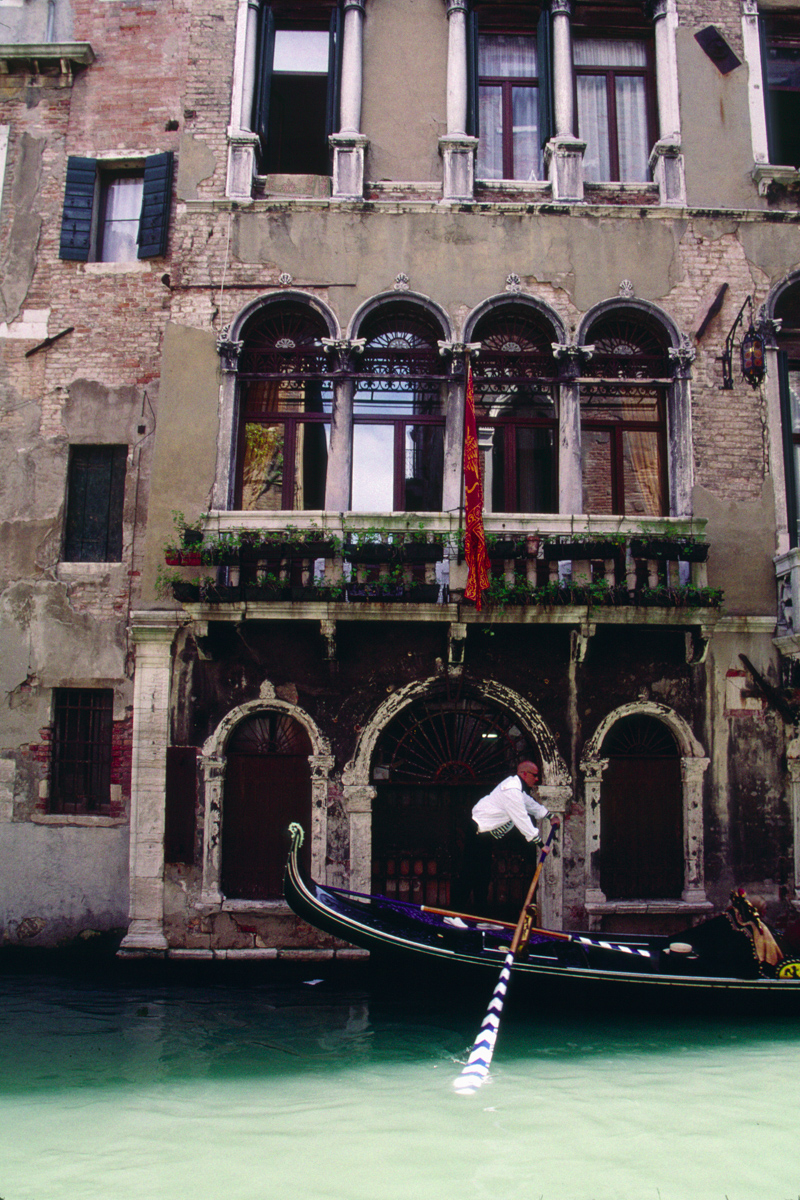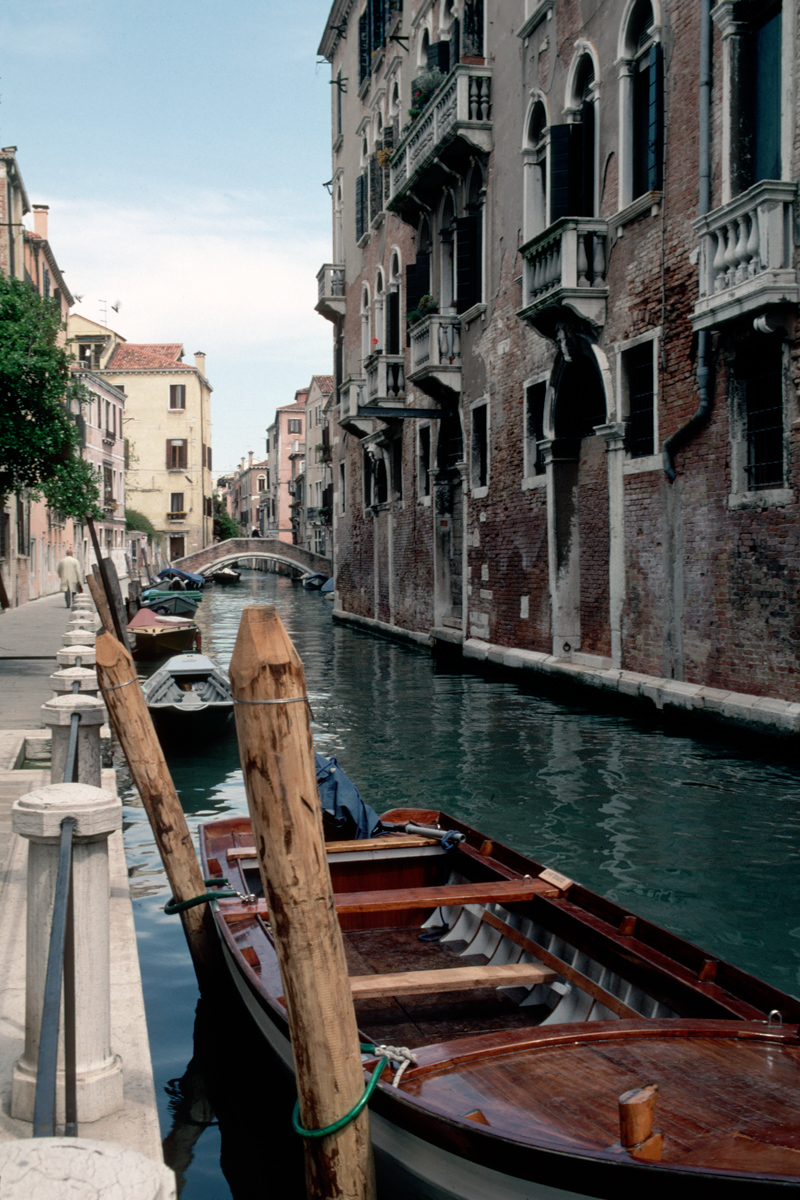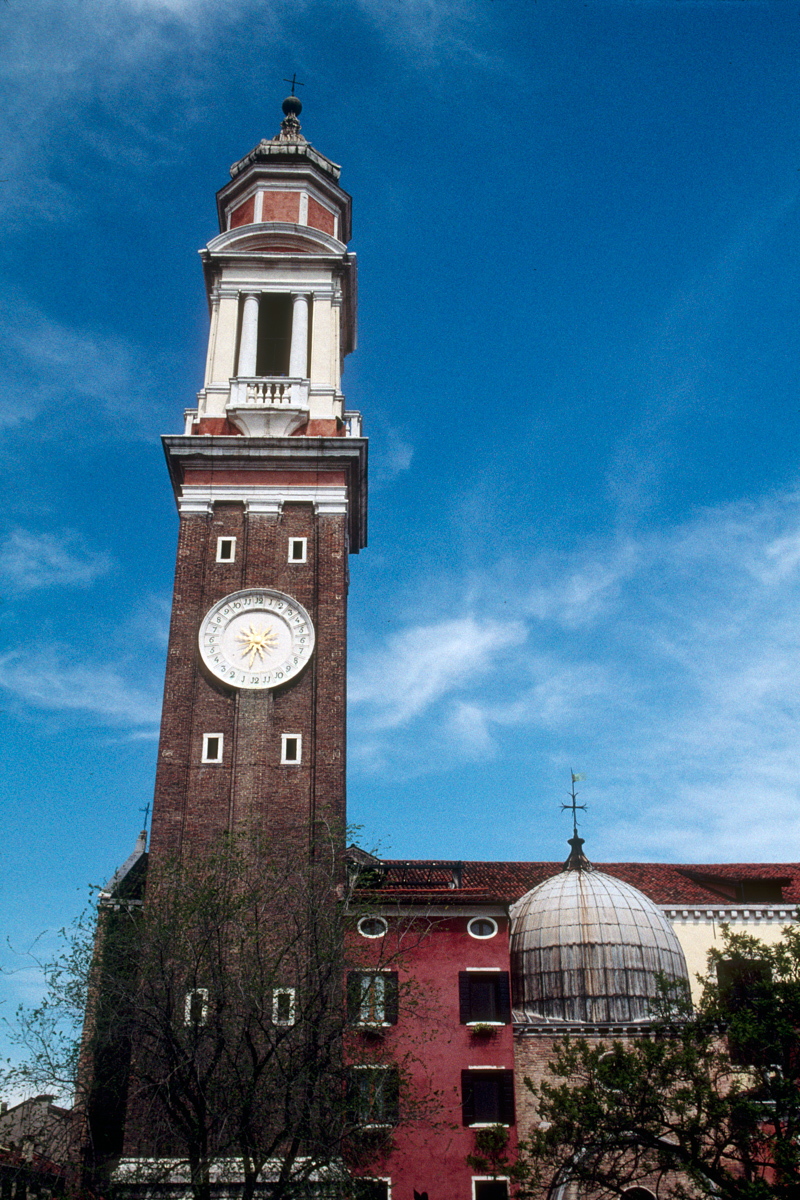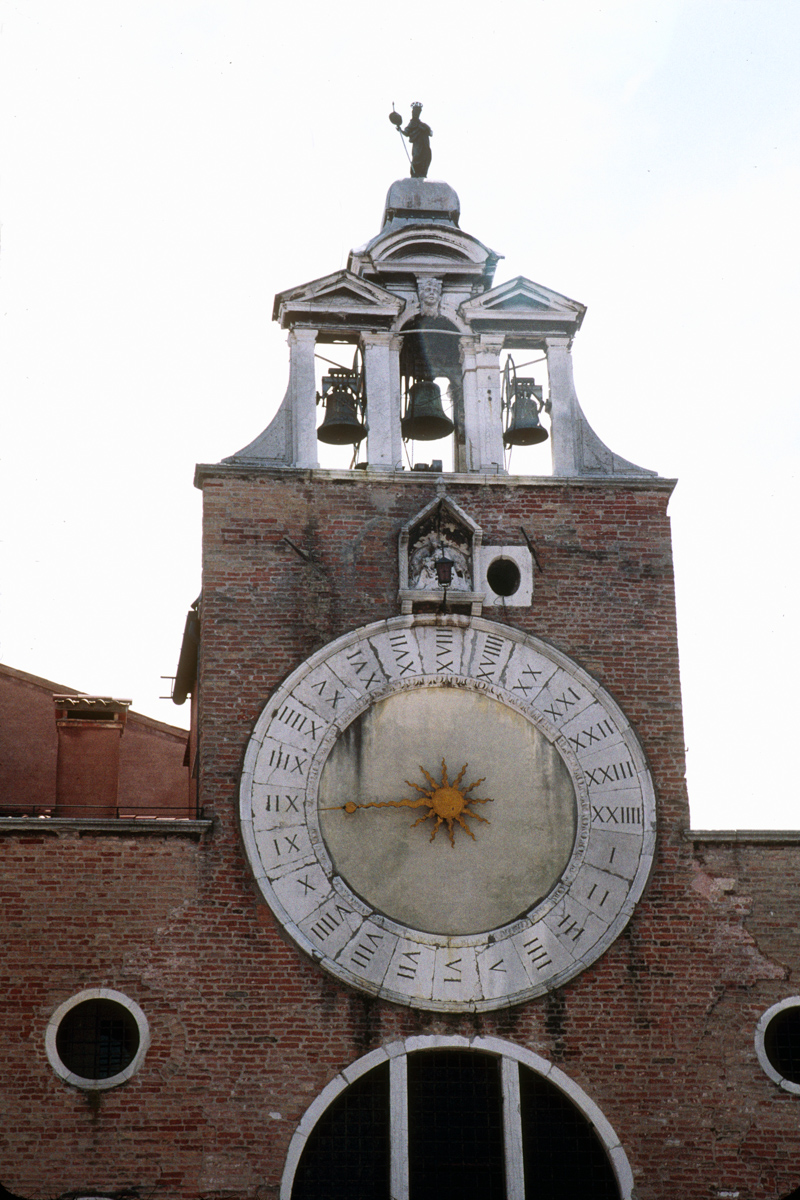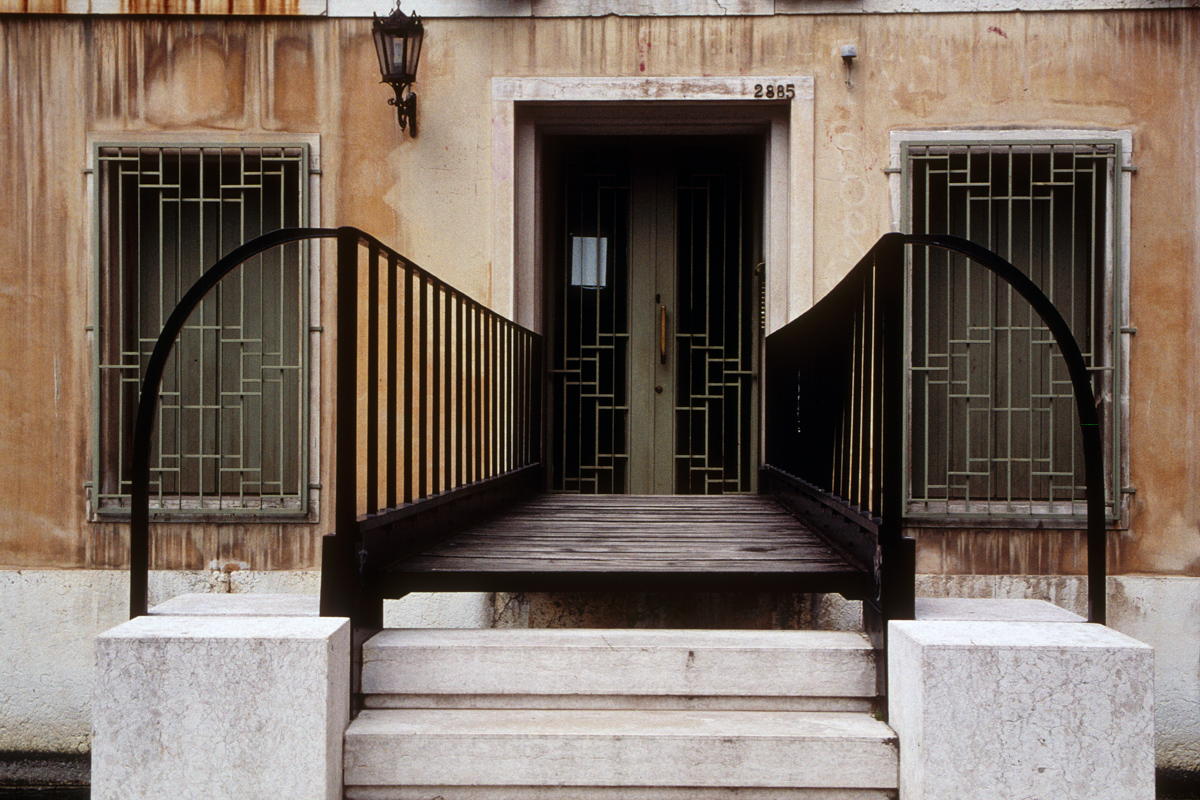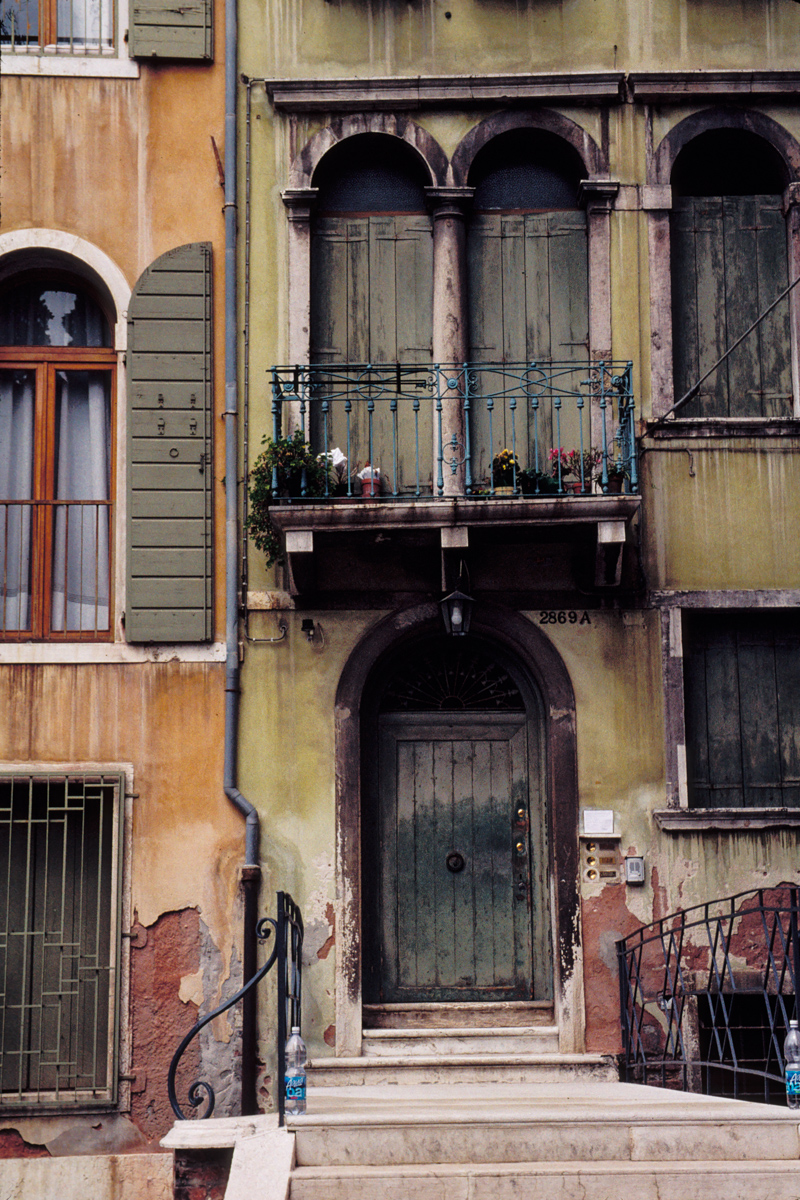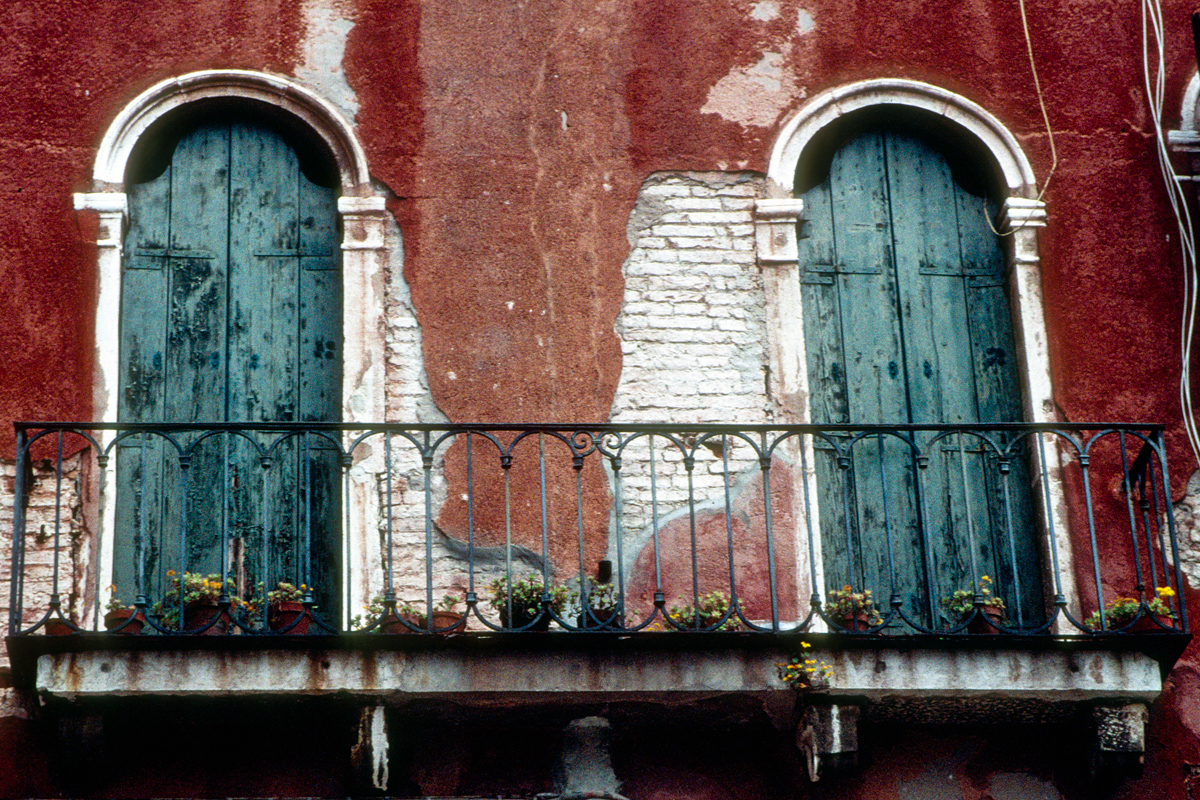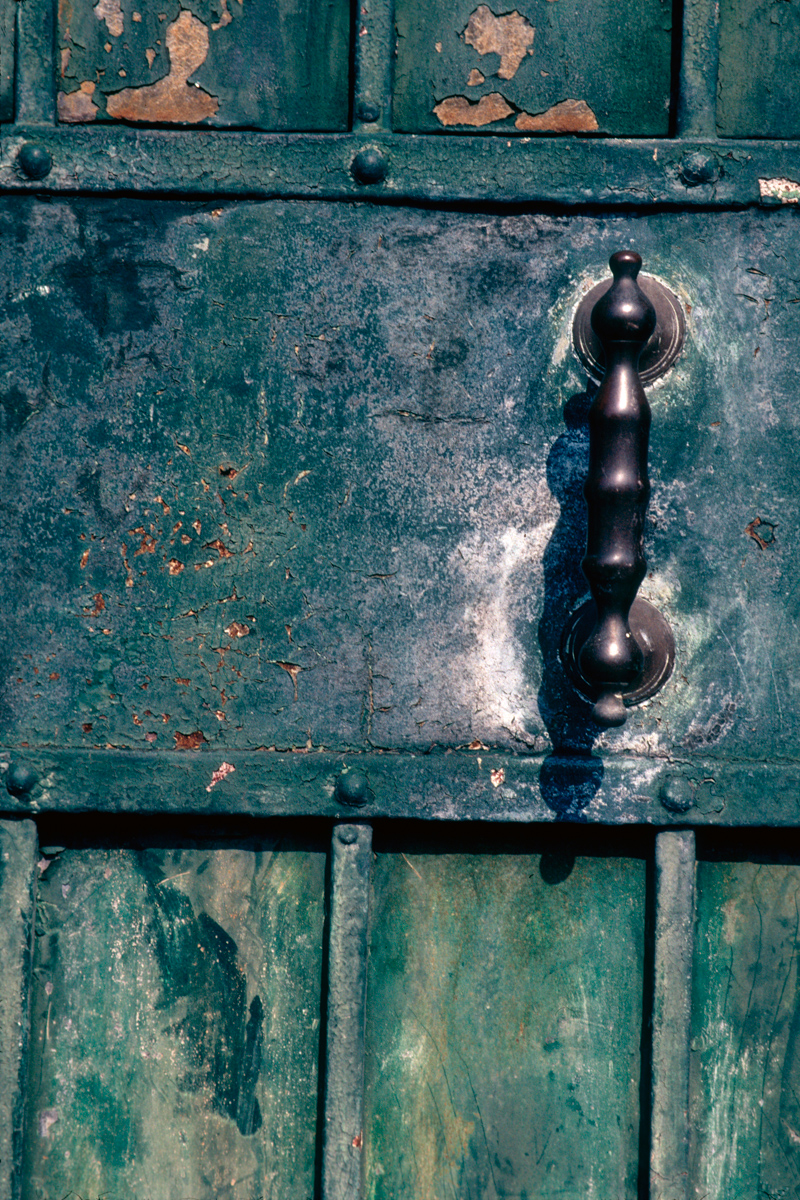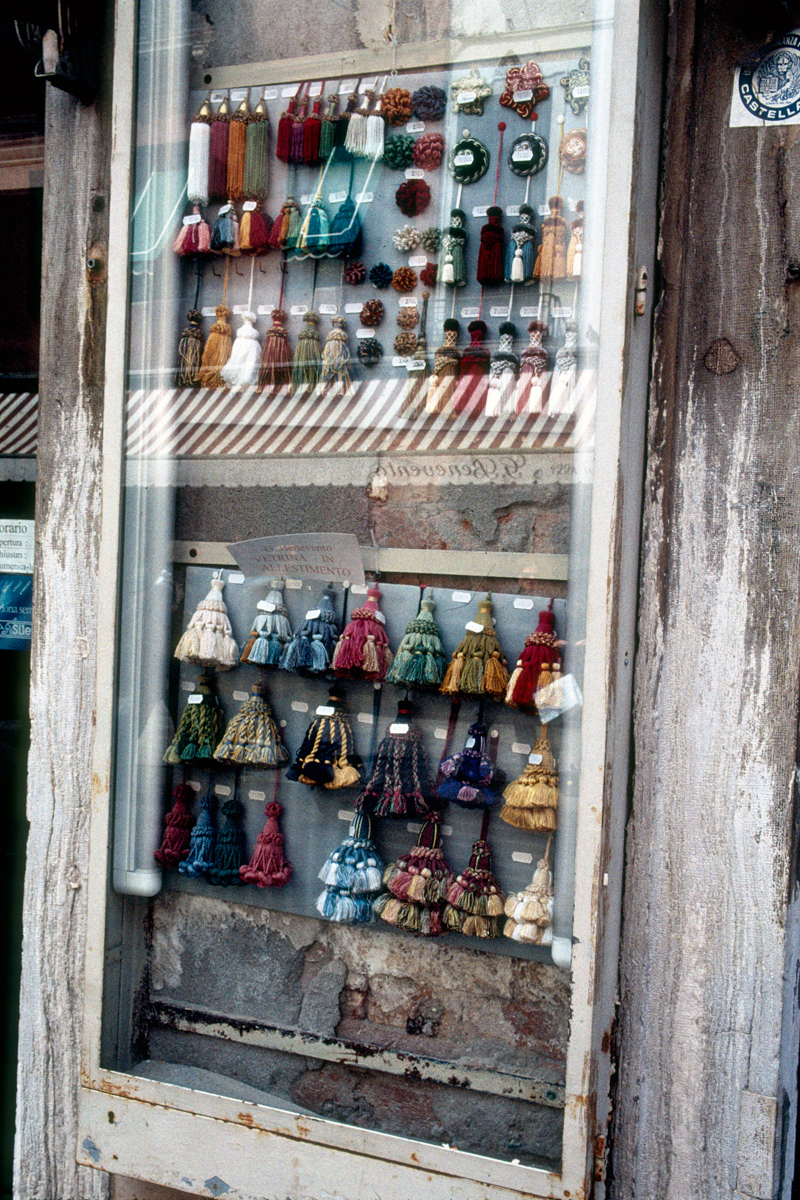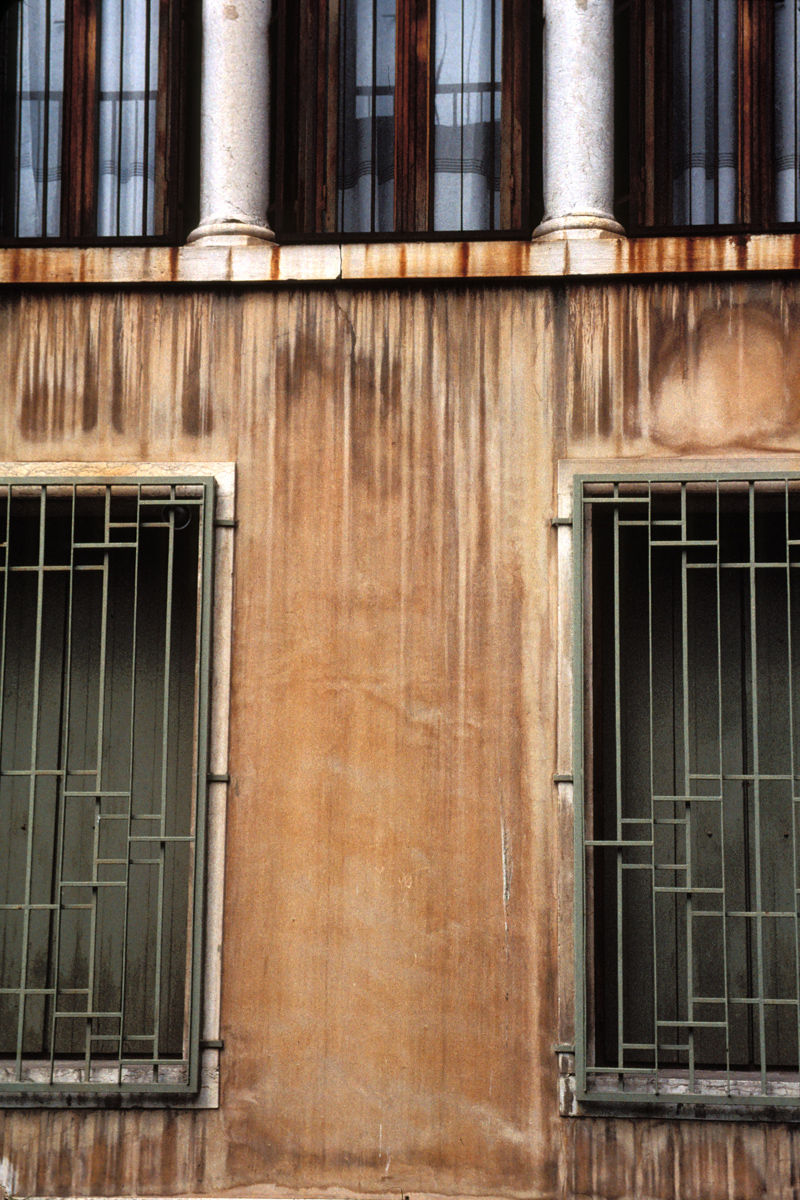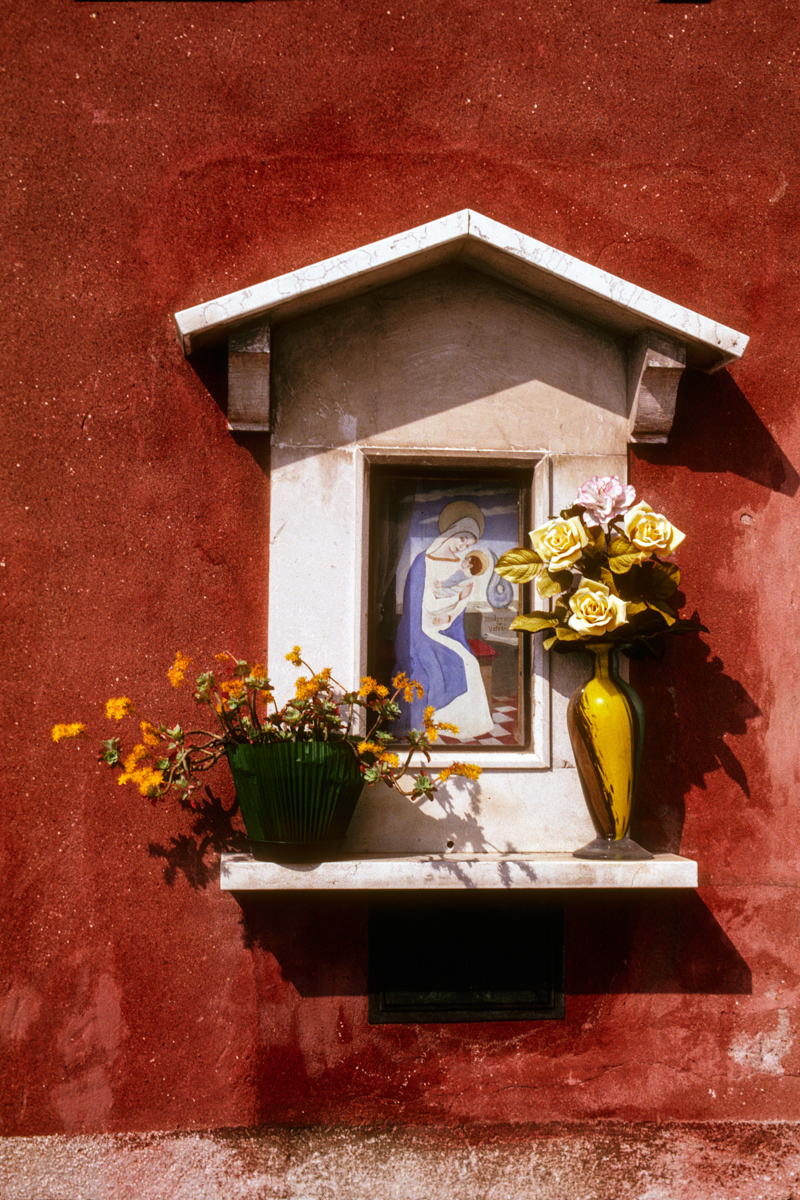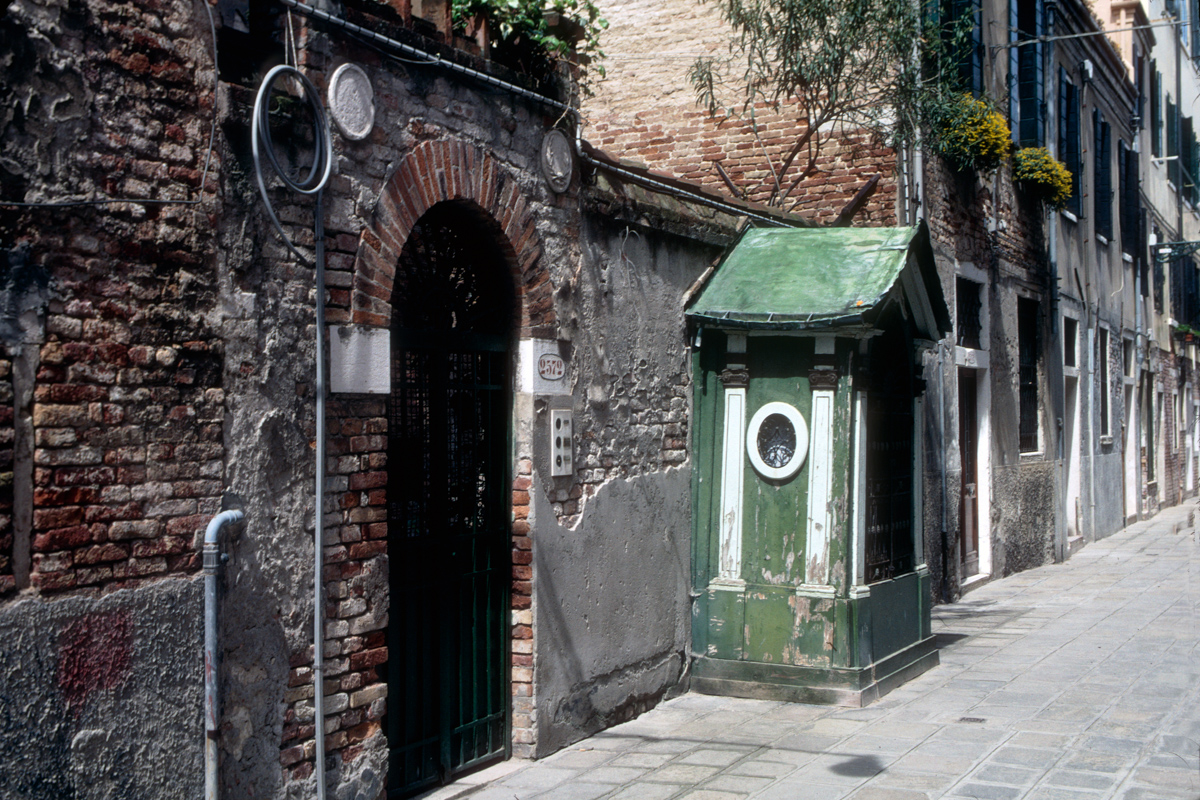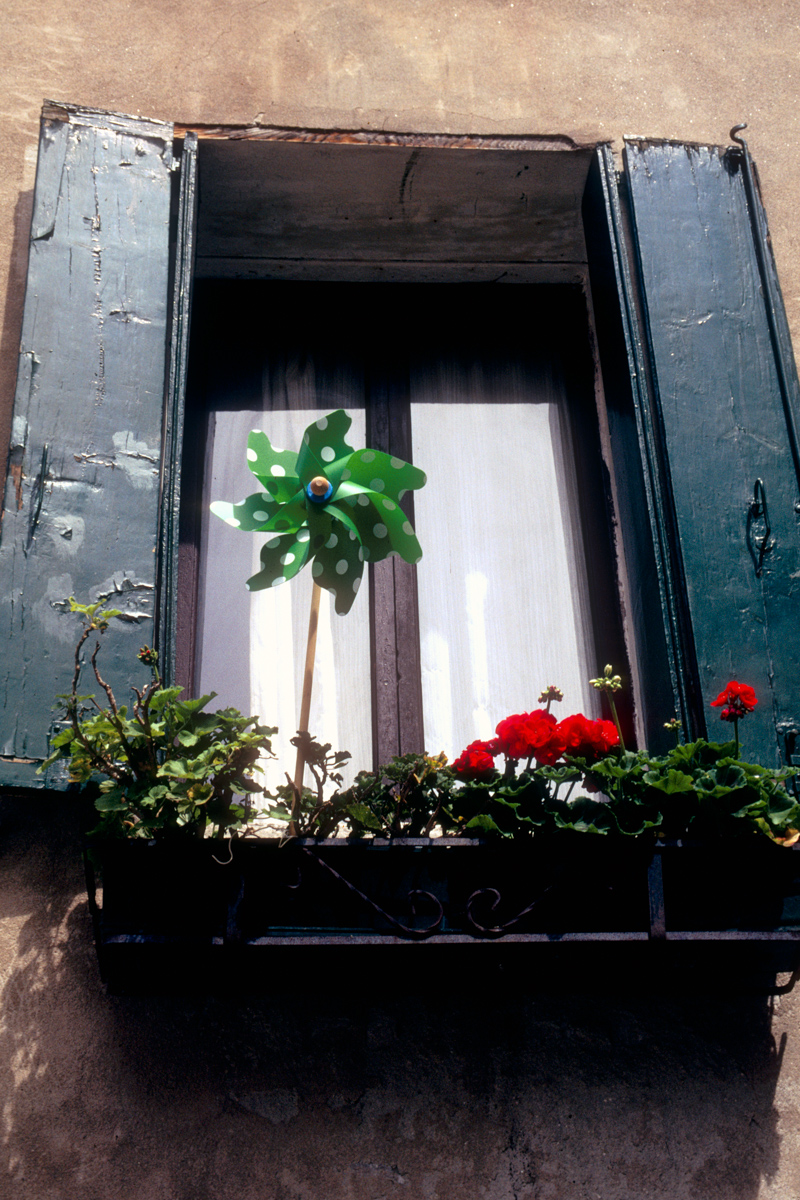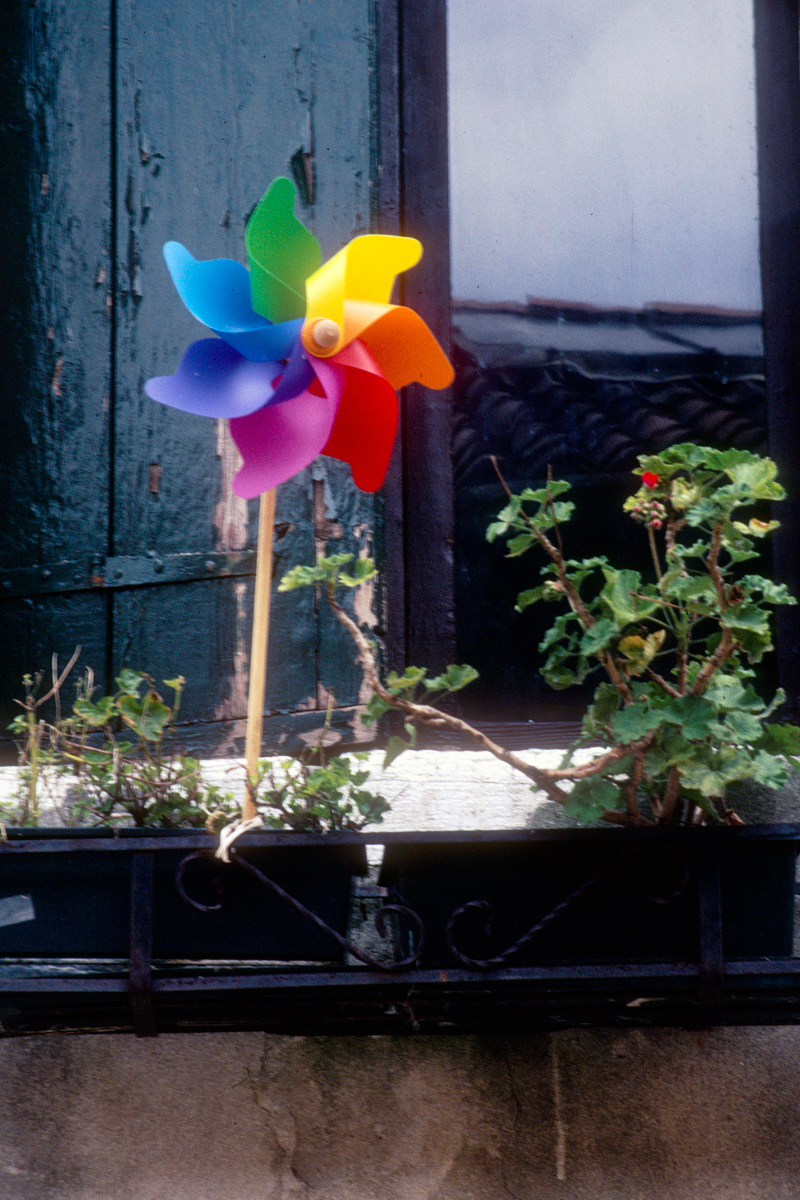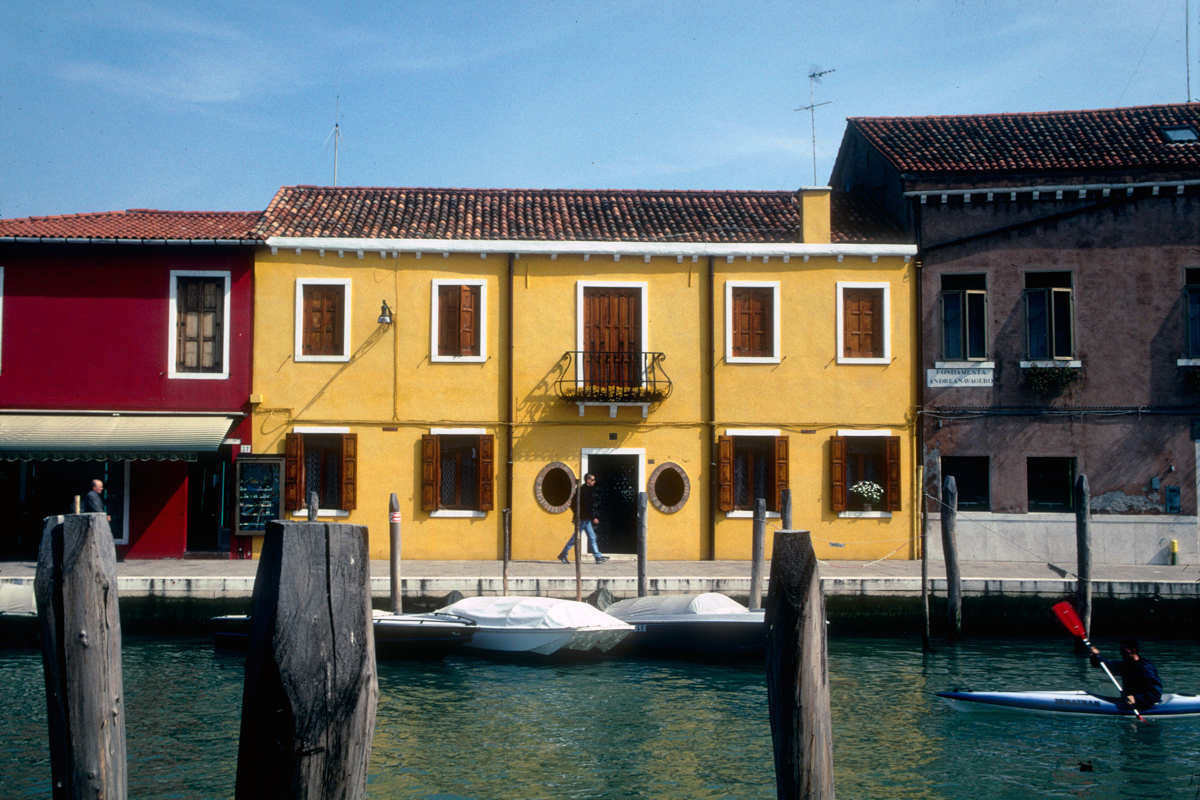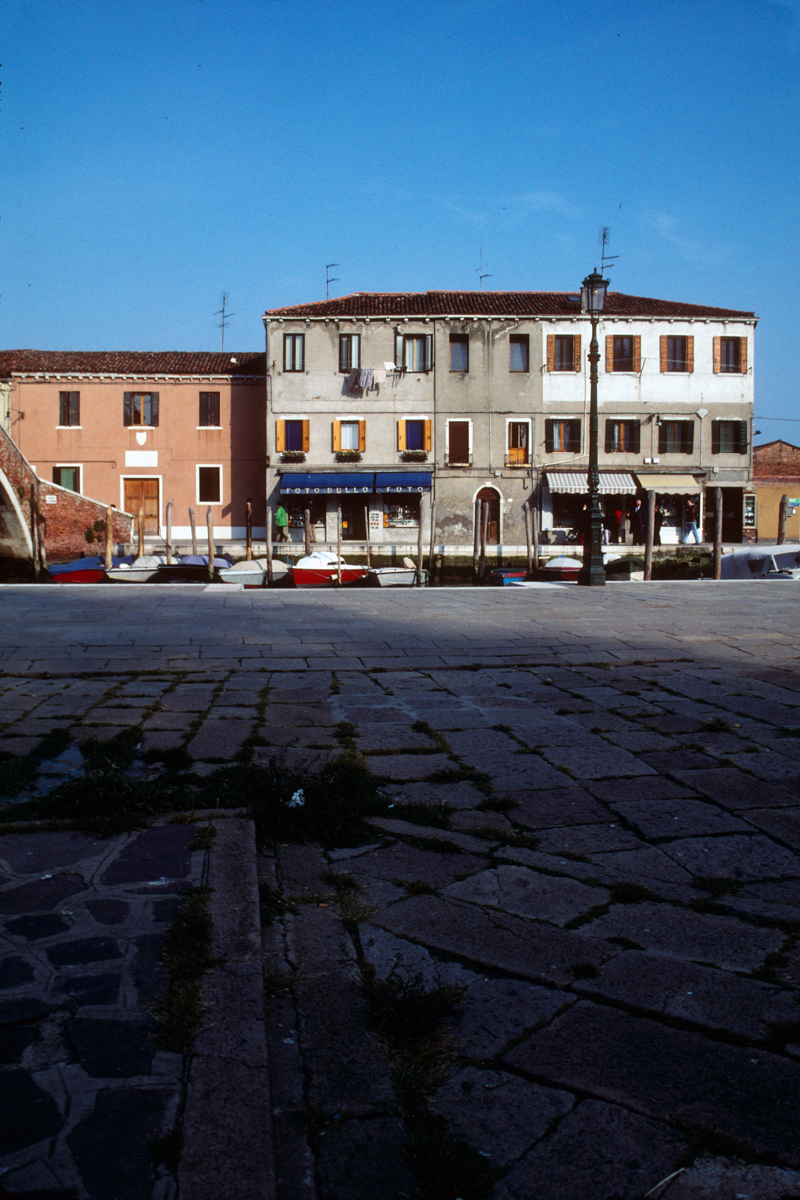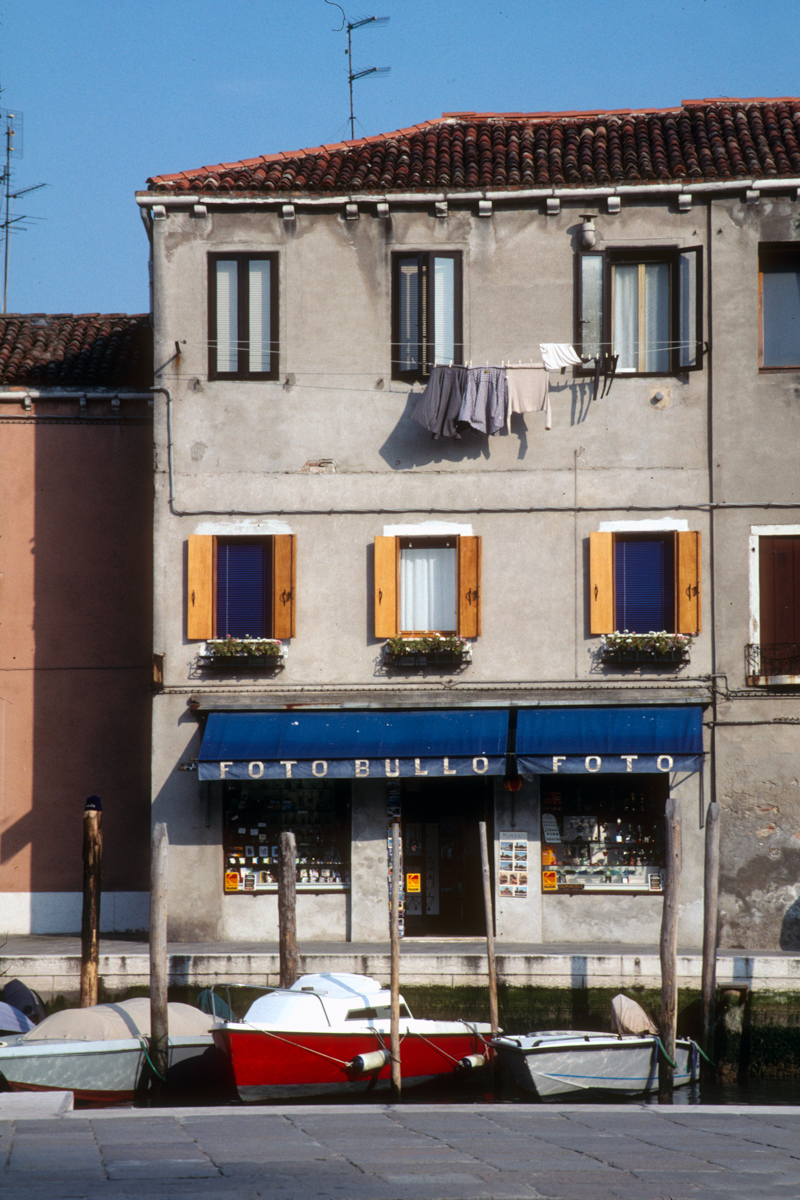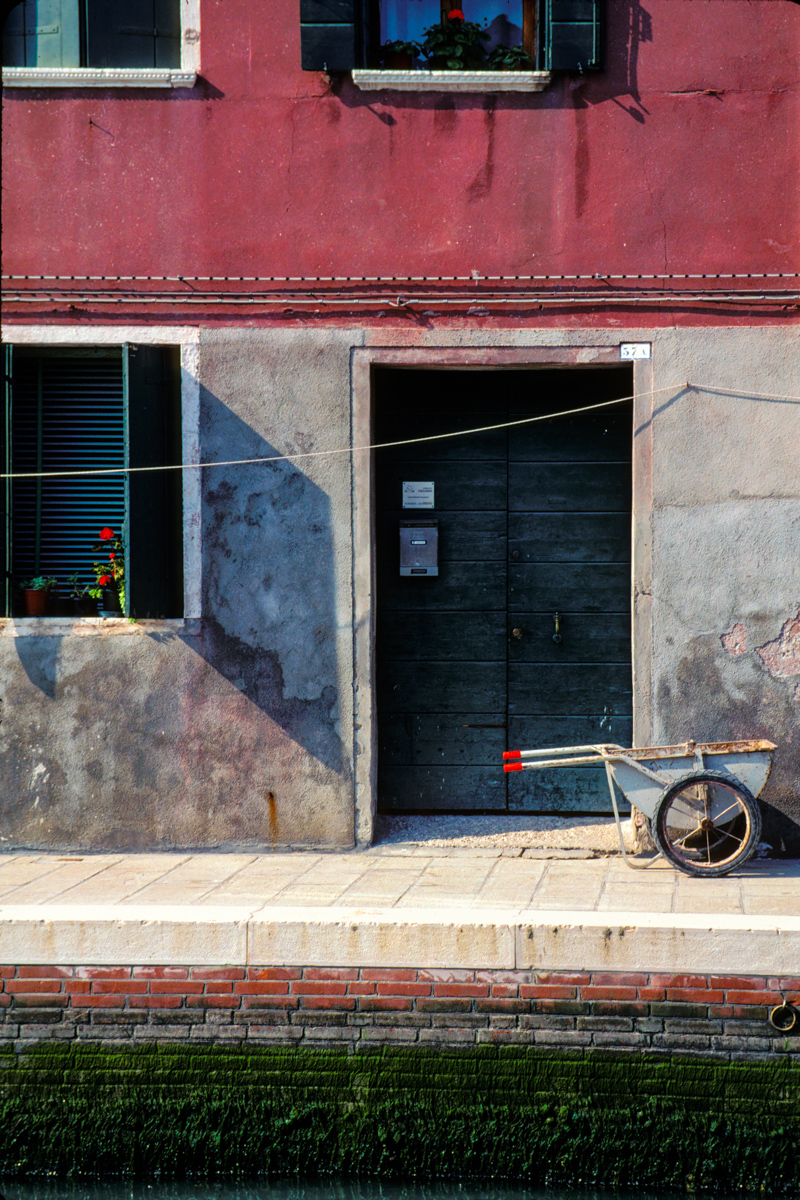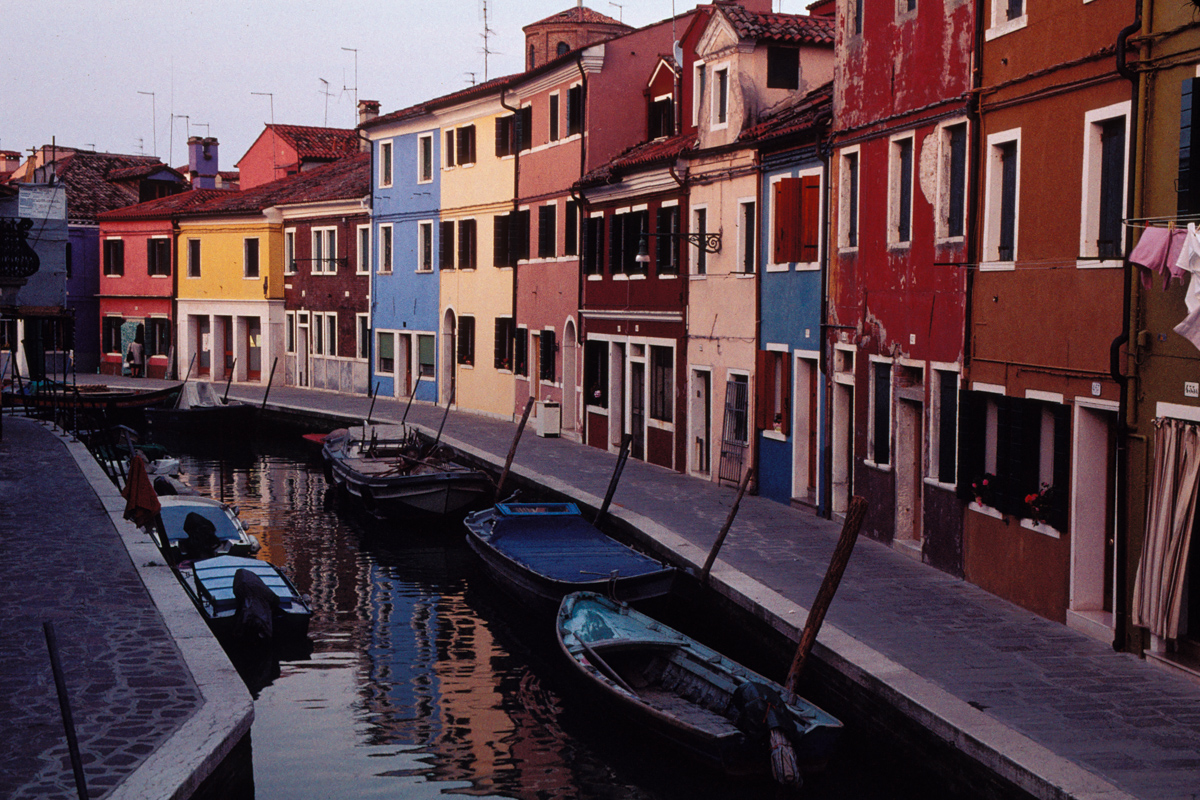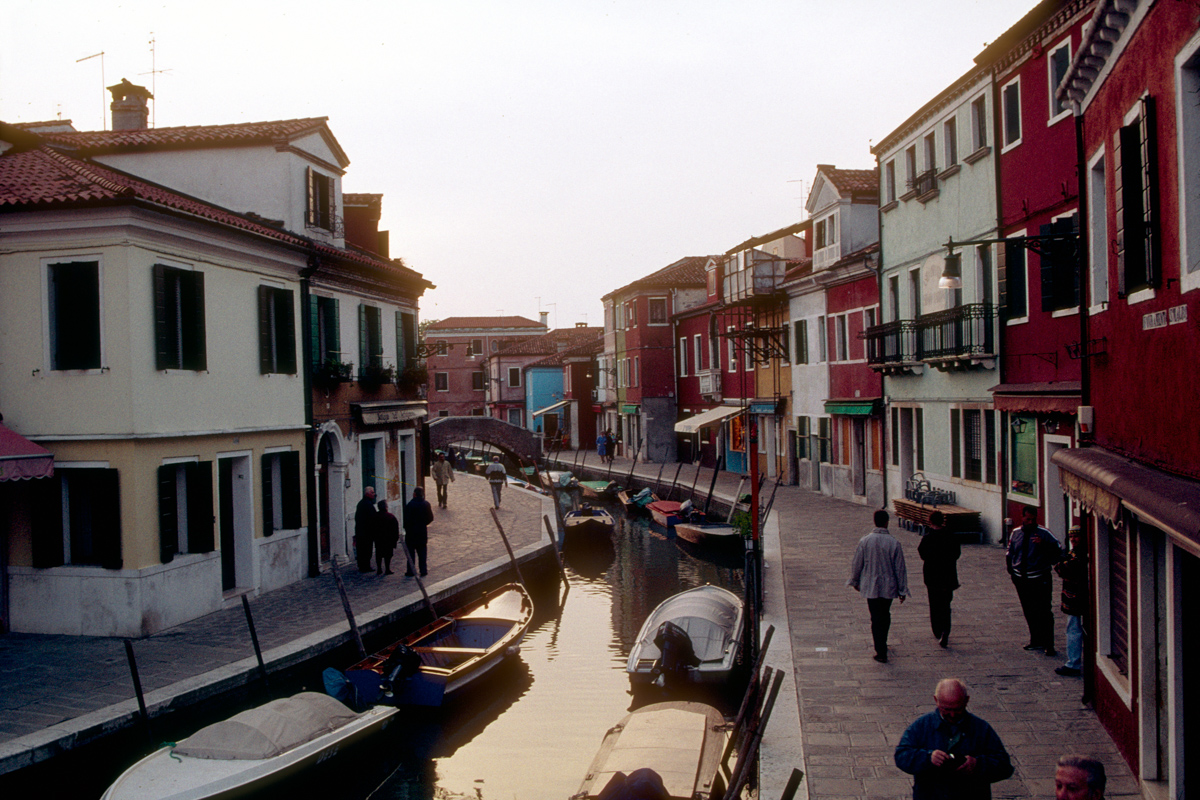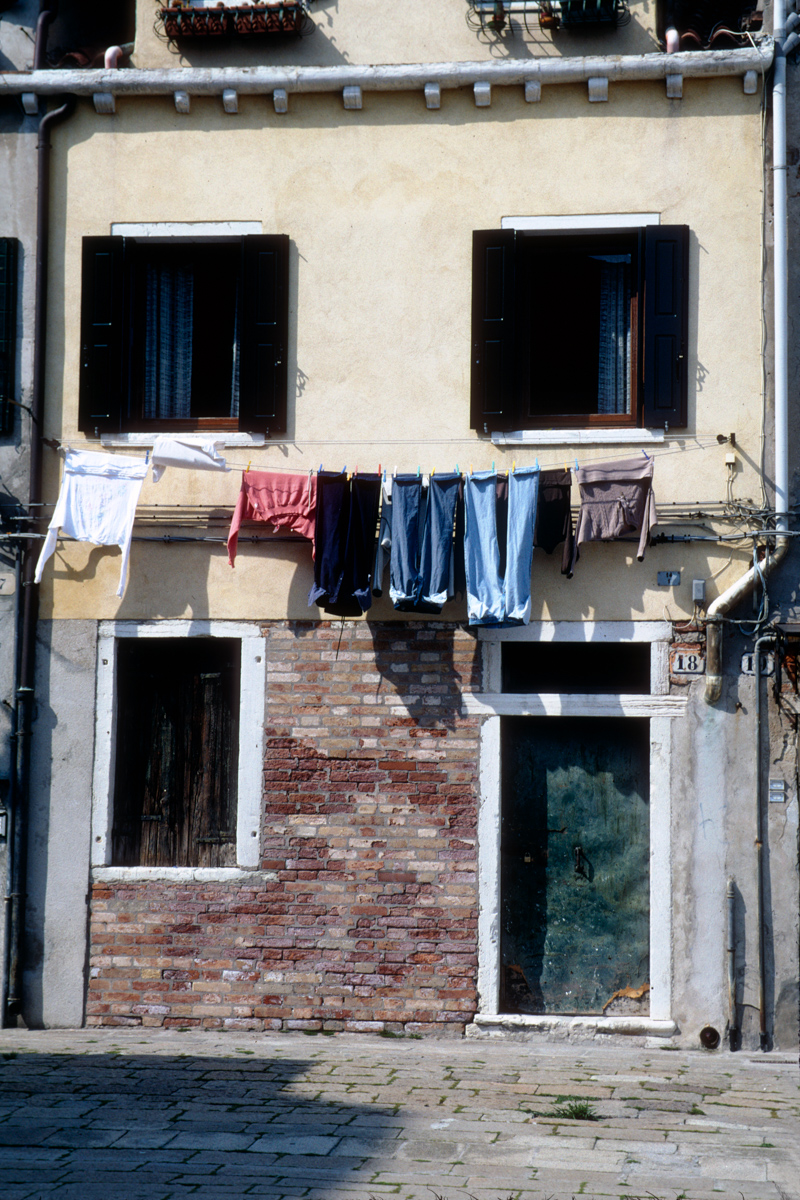Venice is a place you just have to experience for yourself. It’s pretty compact, so you can get around easily on foot, as long as you can find a bridge to get across the canals when you need to. It’s also easy and cheap to use the vaporettos to travel the major canals. We used them to get out to the islands, and also for a photo expedition along the Grand Canal.
Half the film I used on this trip was shot in Venice. Every time I turned a corner, there was some new view, facade, or detail to fascinate me. I’m sure I could spend endless days wandering around with my camera. Next time I go, though, I’m bringing peanut butter sandwiches. The food here was quite unappetizing and very expensive.
Grand Canal Views
We took a round trip from one end of the Grand Canal to the other and back again. The weather was perfect, and many of the spring flowers were in bloom. Wisteria, one of my favorite flowers, was everywhere.
The Grand Canal is where wealthy merchants built their homes during Venice’s golden era. Though many of the buildings are crumbling into disrepair, the canal-side facades are still quite impressive.
Piazza San Marco
The piazza is a large rectangle, with the massive, Byzantine basilica at one end. The rest of the piazza is ringed with hotels and shops. At night, the hotels sponsor string quartets that duel away with classical favorites, as well as some more, er, modern selections. On the night we were there, we heard We are the Champions.
The water was a slightly high while we were there. The locals were completely unconcerned, but it was a little bit un-nerving to see seawater bubbling up through the cracks between the paving stones. Fortunately, our first-floor room was up a few steps from street level.
The Basilica itself is quite overwhelming inside. The walls and ceiling are covered in vibrant mosaics with deep blue, gold, and vivid reds and greens. The marble floor is extremely uneven, and covered in geometric patterns and mosaic images of animals and people, a big stone quilt! Unfortunately, I could not take any photos. I did a lot of furious scribbling in my notebook and bought a number of postcards, though, so I’ve got ideas to fuel my patchwork for quite some time.
Boats and Gondoliers
Since they are the main means of transport around the city, boats are everywhere you turn. Here are a few that I found particularly appealing. Gondoliers are also everywhere you turn in Venice, and most of them are quite aggressive in soliciting the tourists. We elected not to take a gondola ride, but I got a few shots of them anyway.
Quiet Scenes
Even off-season, Venice is quite crowded and commercialized in the tourist sections. Fortunately, you don’t have to go very far off the beaten path to see a much quieter side of the city.
We spent a couple of afternoons wandering and photographing. On one of these, we made our way to the Jewish Ghetto in the Cannaregio district. The term “ghetto” originated in this neighborhood, where the Venetian Jews were confined in the 17th century.
We toured the old synagogues, which were built into the top floors of existing structures. On another afternoon, we found our way into some of the smaller churches. We also did a fair bit of walking around at night. Unlike Rome, Venice closes down early, and is nearly deserted by 10:30 at night. Dan got some wonderful photos of nighttime scenes.
Building Facades
These are just a few of the dozens of shots I took of crumbling building facades. Everywhere you look, there’s beautiful ironwork, and lovely colors and textures. Like the marble floors, these will be providing me with inspiration for quilting and knitting for years to come.
Building Details
Along with the many photos of building facades, I took quite a few detail shots of things near eye level. The door handle was spotted on Murano, and we passed by the display of tassels on our way to the Ghetto.
Quirky Venice
Another favorite subject of mine is small, quirky things that are unique to a place. In Venice, the things that caught my eye were the small shrines tacked onto the outside of buildings, and the colorful plastic pinwheels in window boxes.
Murano
We spent one of our afternoons visiting the islands of Murano and Burano, known for their glass and lace production, respectively. Both islands have a similar architectural style to Venice, but the colors of the buildings tend to be much brighter.
One stop was the Museo Vetrario, which had exhibits on the history of glassmaking in Venice, as well as many period and contemporary examples. Dan made friends with a couple of very malnourished and scruffy-looking cats in the courtyard and we fed them bits of cheese and sausage left over from our lunch. (Softies, the pair of us…)
In the bookshop, I picked up a gorgeous book on the history of beaded flowers in Venice, illustrated with many beautiful photos. I had been seeing these flowers all over Venice, often made entirely in silver or gold beads. They are associated with the Carnevale celebrations. Like the directions for the crocheted flowers from Siena, the book is entirely in Italian, but I’m pretty sure I can follow along with the illustrations.
I was also successful in my one shopping mission for Venice: I found a beautiful millefiori vase for a pretty reasonable price, as well as a few smaller pieces of glass.
Burano
After Murano, we took a fairly long vaporetto ride to Burano. It was about 6:30 by the time we got there, so many of the shops were closed. I did manage to find a lace shop, conveniently located just a few yards from the vaporetto stop. The friendly proprietor was happy to show us all around the shop, and point out some of his finest pieces. I bought a lovely square piece with very fine stitching.
We had hoped to eat dinner in Burano, but did not find the restaurant choices very appealing. Actually, I didn’t find them appealing, because by that time I was thoroughly tired of disassembling seafood. So we walked around the center of town a little bit, and got some nice twilight shots of the colorful buildings.
